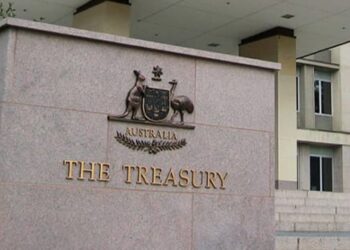A detailed breakdown of costs released by ASIC in response to a Senate estimates question on notice around how final supervisory expenses for the 2020 year had risen more than 60 per cent from their original estimate revealed that around $8 million of the $16 million increase had come from indirect costs.
Compared to the June 2020 estimate of costs, the advice sector was charged an additional $2.5 million for ASIC’s property and corporate services, $2.4 million for governance, strategy and legal costs and $2.2 million for IT support when final levy invoices were issued in early 2021.
In its cost recovery implementation statement, ASIC stated that indirect costs are allocated to “stakeholder, enforcement and registry teams in proportion to the internal support they receive to carry out their work”.
“For example, some IT costs are allocated based on storage capacity, length of processes and activity volumes, while other costs to build, support and maintain our IT systems are attributed to ASIC teams based on the number of full-time equivalent (FTE) staff who use those systems,” the regulator said.
“We attribute property costs and some indirect costs – such as governance, leadership and compliance costs – to teams based on their FTE staff.”
The release of the data follows heavy criticism from industry around the rapidly rising levy and ASIC’s seeming inability to accurately estimate costs due to each sector at the conclusion of the financial year.
At the recent Stockbrokers and Financial Advisers conference, ASIC commissioner Danielle Press said it was proving “very difficult” for the regulator to allocate expenses under the levy model given unforeseen events such as major legal cases.
“I can closely budget on what we’re going to spend on supervisory work and things like the access to advice [consultation], we’ve got a good handle on that,” she said.
“It’s difficult to get a handle on enforcement costs because we don’t know what is going to come out of the woodwork from here to next month, let alone 11 months out. We’re talking to government about this, but at the end of the day we’re implementing an instrument that is out of our control.”
Commenting on the latest ASIC cost data, AFA acting chief executive Phil Anderson said the expense allocations made by the regulator to the advice industry seemed “somewhat arbitrary”, with the sector on the hook for around 15 per cent of ASIC’s total governance and compliance costs and 11 per cent of its IT expenses, based on figures released as part of its original cost estimates in June last year.
“The fact that more than half of the increase relates to a higher allocation of indirect costs only elevates our concern about the inequity of the ASIC funding levy model,” Mr Anderson said.
“We think that this needs to be addressed to ensure that we avoid what will probably be a further increase in the funding levy for 2020/21, which will also be heavily influenced by the continuing decline in adviser numbers.”
Mr Anderson said the increase in allocation of indirect costs in proportion to rising enforcement expenses for the advice sector also raised the issue of whether, as the regulator has previously claimed, the expenses could be offset in the event of a successful case against a major institution.
“Are they able to recover these indirect costs or is it only the direct costs that they will be able to recover should they win court cases? That is another question that would be interesting to know,” he said.




Ahh the typical “user pays” model. ASIC should have always been federally funded, but since ‘corporatising’ it, it has to be a ‘commercial’ entity of its own. Sorry fellas, this is what capitalism is.
nope, this is what government is
The most disgusting , oppressive, kick in the teeth I have experienced as a citizen of this country.
Small business will never flourish whilst we have a federal government in love with bloated bureaucracy. I can never vote Liberal again; they are not the party for small business. Instead they are allowing Frydenberg to pursue policies which favour big business. The banks happily ditched their advisers in order to move into robo-advice.
What am I missing here? Isn’t the reason we pay taxes to fund government departments and instrumentalities? What’s next….fund the police department with seized proceeds of crime and speeding fines?
Worse, Advisers don’t even get the benefit of the ASIC legal fines, that’s straight to consolidated revenue.
Adviser just get to pay All the costs with zero chance of a reduction from enforcement penalties.
Double taxation at its worst.
Thanks Frydenberg, Not
Let’s boot this disaster Frydenberg out and his LNP big bank loving mates.
No, our taxes don’t fund government spending, however since ASIC is now a ‘private’ entity, it needs to be able to explain to treasury/government that it can fund itself or else their jobs are on the line. Ultimately, the federal government decides who to fund, how much and when – this is a capitalist democratic system at play here.
This is exactly what I suspected. ASIC and other regulators are worse than the mafioso – extracting money for delivering nothing
Nathan (below) – BRILLANT COMMENT! Perfect summary.
“[i]At the moment, the Government just takes all the profit from one side (Registry), passes on all the cost from the other side (Regulation), and then keeps any gains from successful prosecution of the regulatory function. It is so one sided and anti-business that it would be laughable if it wasn’t so distressing.[/i][i][/i]
Four words are all I can be bothered adding to this article: “disgraceful conduct by ASIC”.
The Liberals are the ones in charge. Disgraceful conduct by them.
ASIC has done everything in their power to destroy the independent financial advice sector for the last two decades, and give a leg up to their political allies, the Union/Labor loving industry funds. The final insult – they are now sending us a bill for it. They must think this is hilarious internally. Has a more evil and crooked government bureaucracy ever existed?
Giggity is correct. WE are funding an organisation to nail us , not help us.
No.
Giggity, sad to say but you are perfectly correct.
Danielle “it’s above my pay grade” Press strikes again. If you can’t adequately complete a budget then do everyone a favour and leave. Every other business in Australia has to operate on a budget, and when they get something wrong there are consequences. Maybe come and talk to someone in the real world and you would understand this. Based on your mind set do financial planners get to ignore your rapidly increasing invoices because we didn’t budget for such obscene increases?
The current funding model needs to be scrapped. How much longer before the powers-that-be recognise this???
$4,000 at least for 2020/21….. per adviser, is everyone ready for this?? Is it fair and appropriate?
ASIC is corrupt.
I have the solution for you not to pay that ridiculous arbitrary amount. Get out of the industry!
You could retire if able or if not, get a job fruit picking or in hospitality as they are screaming out for workers all around the country and the pay isn’t bad.
I’m serious, certainly more financially viable than advising and less chance of being sued!
I’m thinking about it. The main impediment is concern for my clients.
I make around $250kpa and my books is not large. Should be able to near double from here with good management over the coming 5-10 years, while maintaining similar profit margin to now. While I agree this cost system is a crock, its just another cost, like any business, we need to make our case for change and until then, if ever, find the cost savings elsewhere to compensate. Seriously, its the profit of one client covers the annual fee. Let’s get over the amount and stop making stupid comments like we’d be better off fruit picking. Is it ideal? No. Is it cause to throw away an entire career? Youre kidding yourself.
Given that all of ASIC’s costs are being met by the people they supervise, what is stopping the regulator from taking on risky court cases (they have a big chance of losing) and other peripheral work (so they are seen to be a cop on the beat) ,knowing that the industry will pick up these costs? It’s a bit like local councils passing on higher than inflation rate payments every year knowing residents have no alternatives! Surely this has to be controlled?
It still doesn’t change the fact that the levy is a loss situation for the advice community. When they are successful in their recovery operations, those funds just go to general revenue. When they are unsuccessful, the cost is placed onto advisers. Then all other costs are also placed on Advisers.
No one seems to question the fact that while perhaps the Government should not have to pay for the cost of regulation (arguable given ASICs role is consumer protection and that is quite clearly something that taxpayers should pay for) ASIC when viewed as a whole, is a very profitable organization. The Government garners big dividends from the registry side of the business. Arbitrarily partitioning parts of the business so as to justify imposing costs on third parties, is ignoring the fact that ASIC as an organisation has two important roles: Registry and Regulator. It is entirely appropriate for one part to help pay for the other.
At the moment, the Government just takes all the profit from one side (Registry), passes on all the cost from the other side (Regulation), and then keeps any gains from successful prosecution of the regulatory function. It is so one sided and anti-business that it would be laughable if it wasn’t so distressing.